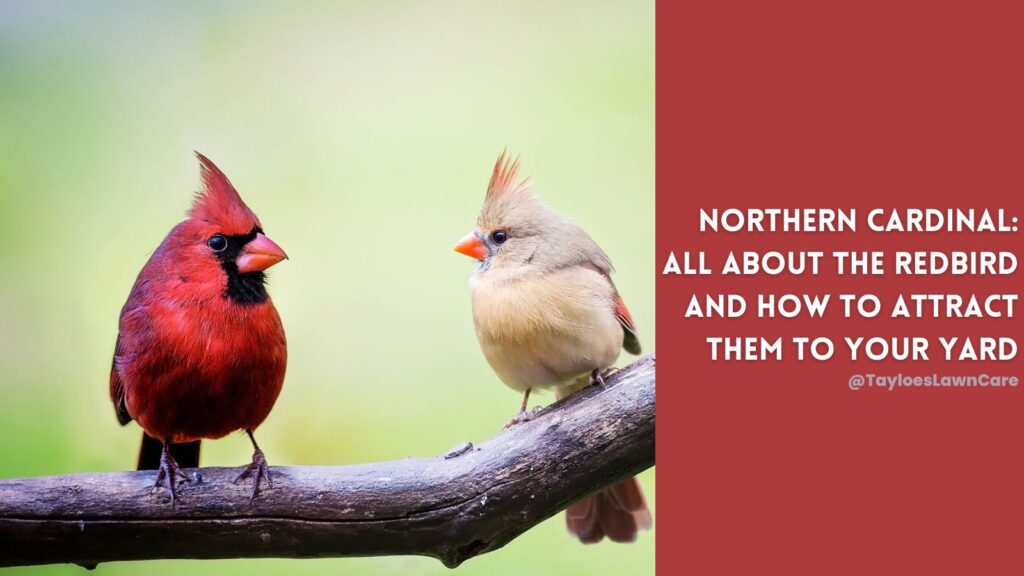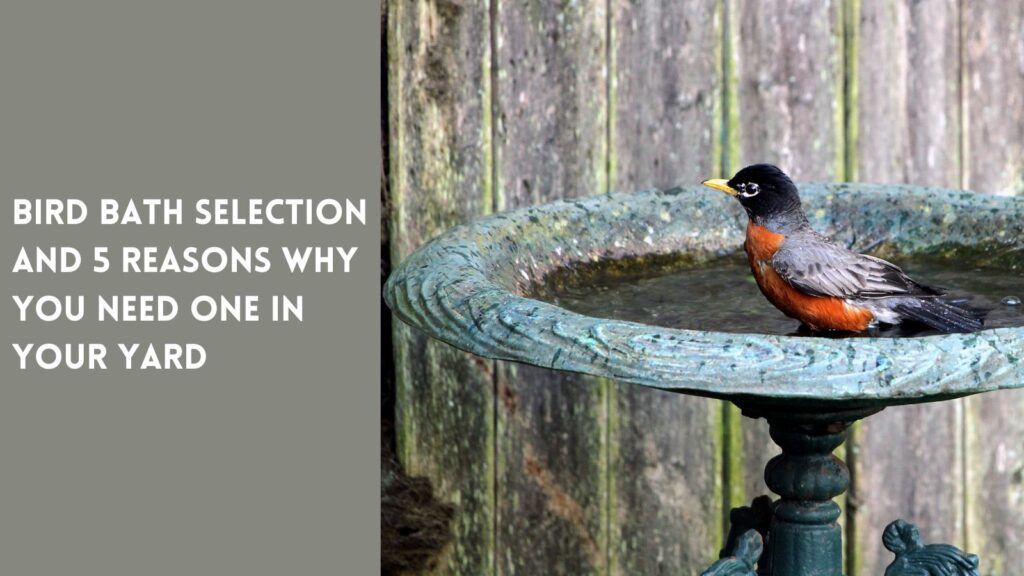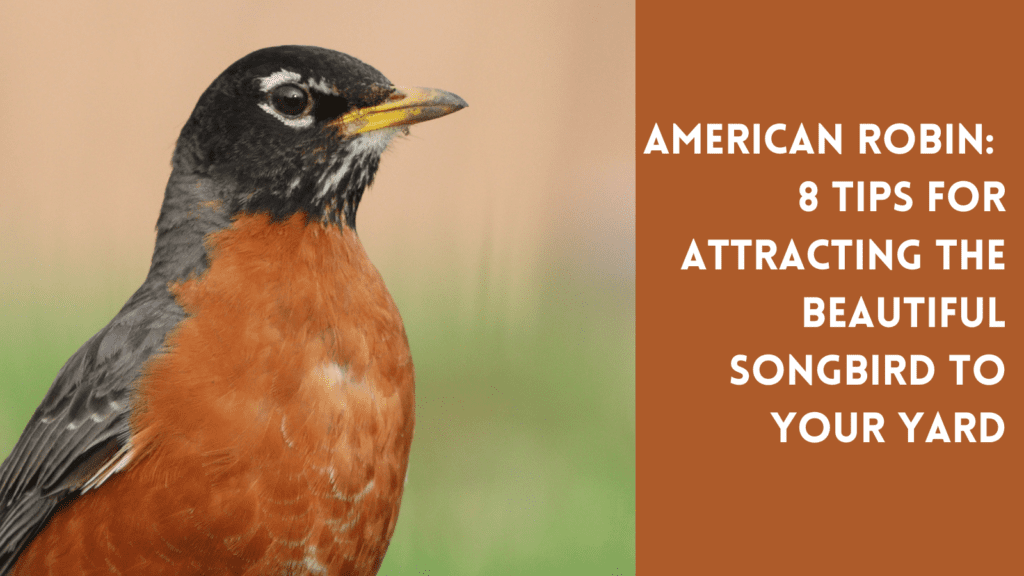Last Updated on: 21st October 2023, 05:45 pm
Here’s the source of the call, “chick-a-dee-dee-dee.”
Carolina Chickadees have a cheery song and spirited behavior. It is a feathered gem native to the southeastern United States. As one ventures through their habitats, the distinctive “chick-a-dee-dee-dee” call often serves as nature’s soundtrack, heralding the presence of this little bird.
The Carolina Chickadee is a non-migratory bird in North Carolina, meaning it remains in the same general area throughout the year. While they might move around within their range in search of food, especially during the colder months, they don’t undertake long-distance migrations like other bird species. Instead, Carolina Chickadees are year-round residents of the Tarheel State.
Although they may be small, Carolina Chickadees are fundamental to their ecosystems. Their penchant for a diet rich in insects keeps them fueled and pest populations in check.
This content will take a peek at the world of the Carolina Chickadee. We will explore its habits, habitat, and significance in the natural order. Whether you’re a seasoned birder or intrigued by the avian wonders around us, there’s much to learn and appreciate about this endearing species.
Physical Characteristics of the Carolina Chickadee
The Carolina Chickadee, scientifically known as Poecile carolinensis, possesses a compact size. It displays distinctive markings that make it readily identifiable, even to the casual observer. This sweet bird typically measures 4.7 to 5.5 inches in length and sports a weight of about 0.3 to 0.4 ounces. That small size makes it one of the smaller passerine birds in its native habitat.
Its plumage features a blend of neutral shades complemented by striking contrasts. The head boasts a black cap and bib set against white cheeks. These markings give it an almost mask-like appearance. The back and flanks are a soft gray, while the underparts transition to a slightly paler hue. Its wings and tail feathers have subtle edges of white, offering a gentle contrast to the bird’s overall coloration.
One might easily confuse the Carolina Chickadee with its close relative, the Black-capped Chickadee. However, the Carolina Chickadee generally has a slightly smaller size and a more muted gray back, as opposed to the richer slate-colored back of the Black-capped Chickadee.
With a keen eye and an appreciation for detail, bird enthusiasts and novices alike can revel in the nuanced beauty of the Carolina Chickadee, a true avian emblem of the southeastern United States.

Habitat and Distribution of the Chickadees
The Carolina Chickadee, as its name suggests, is primarily associated with the southeastern portion of the United States. Its range extends from southern New Jersey to Florida and stretches westward to eastern Texas and Oklahoma. The Carolina Chickadee favors various habitats, offering food and shelter within this expansive territory.
According to the Audubon Society, the preferred habitats of the Carolina Chickadee encompass mixed deciduous forests, where a combination of trees like oaks, maples, and pines create a layered canopy teeming with insect life. Swamps and pine woodlands also serve as significant habitats, especially in areas where wetlands offer food resources and nesting sites.
But the adaptability of the Carolina Chickadee doesn’t stop at natural woodlands. These birds can also thrive in suburban gardens, parks, and other human-made green spaces. Their willingness to thrive close to human habitation highlights their resilience and versatility.
Their distribution and habitat preferences offer insights into the species’ ecology. It also underscores the importance of preserving diverse habitats for chickadees and the myriad other species they share their homes with.
Diet and Feeding Habits
The Carolina Chickadee, despite its diminutive size, is an active forager with a varied diet that plays a key role in its survival. It also has an impact on local ecosystems.
Primarily insectivorous, these birds have a penchant for a wide range of small arthropods. Beetles, caterpillars, spiders, and other insects often find themselves on the menu. Their acrobatic feeding style, where they often hang upside down from twigs and leaves, enables them to access food sources many other birds might overlook.
However, their dietary habits aren’t strictly limited to insects. During the colder months, when insects become scarce, Carolina Chickadees exhibit flexibility in their diet. They readily consume seeds and berries, making them frequent visitors to bird feeders stocked with sunflower seeds, peanuts, and suet. Their adaptability in diet ensures they maintain the necessary energy levels throughout the year, even during challenging seasons.
Interestingly, Carolina Chickadees also exhibit food-storing behavior. They often cache seeds and other food items in hiding spots, such as bark crevices or under leaves. This behavior ensures they have a ready food supply when foraging is difficult.
Understanding the diet and feeding habits of the Carolina Chickadee offers a glimpse into their daily life. It showcases their pivotal role in regulating insect populations, thus contributing to the health of their habitats.

Attracting Carolina Chickadees to Your Yard
Creating an inviting environment for Carolina Chickadees can be a delightful experience for bird enthusiasts and gardeners. By stocking your backyard birdfeeder with their preferred foods, you not only support these delightful birds but also get the chance to observe their lively antics up close.
Here’s what to include:
- Sunflower Seeds: Black oil sunflower seeds are a favorite. These fat-rich seeds provide essential energy for chickadees, especially during colder months.
- Peanuts: Offer them unsalted, shelled peanuts. These nuts are nutritious and especially loved by chickadees due to their high protein and fat content.
- Suet: This is a high-energy blend of fat and other ingredients. Suet cakes or blocks, especially those mixed with seeds or insects, can be an excellent attractant for chickadees in the winter when they need additional calories.
- Mealworms: While live mealworms can be a treat, dried mealworms can also be a hit. They serve as a protein-rich food source that mimics their natural insectivorous diet.
- Mixed Seed Blends: Opt for quality seed mixes that have a variety of seeds, such as millet, cracked corn, and others. However, ensure that sunflower seeds and peanuts are prominent, as chickadees particularly favor these.
- Fresh Water: A clean and accessible water supply is essential. Chickadees need water for drinking and bathing. Having a birdbath or a water dish nearby can make your backyard even more appealing to them.
- Safe Feeding Environment: Ensure your birdfeeder is in a location safe from predators like cats. Also, consider placing the feeder close to shrubs or small trees, providing chickadees with quick refuge if needed.
- Give these feathered friends special attention in the coldest weeks of winter. That’s when the food and water become scarcer.
By considering the dietary preferences of the Carolina Chickadee and providing a safe environment, your backyard can become a haven for these delightful birds, allowing for countless hours of observation and enjoyment.
Songs and Calls of Carolina Chickadees
The Carolina Chickadee’s vocalizations are as distinctive as its appearance, and for many, the sound of its calls is synonymous with the forests and gardens of the southeastern U.S.
- Signature Call: The most recognized call of the Carolina Chickadee is the namesake “chick-a-dee-dee-dee.” This call is multifunctional. It can be a contact call between individuals, an alarm signaling potential threats, or even a means to express curiosity.
- Song: Apart from its signature call, the Carolina Chickadee also has a melodic song often rendered as “fee-bee-fee-bay” or simply “fee-bee.” Typically, this song is most prominent during the breeding season. Males use the call to establish territory and attract a mate.
- Variations: The intensity and number of “dees” in their signature call can vary. Studies have shown that a rapid repetition of “dee” notes often indicates the presence of a ground-based predator like a cat, while a slower pace might suggest an airborne threat like a hawk.
- Communication with Other Species: Intriguingly, other birds, such as nuthatches and titmice, often join chickadee flocks and pay attention to their calls. This behavior suggests that the chickadee’s vocalizations serve as a valuable information source for various species, alerting them to potential dangers or environmental changes.
- Learning and Memory: The vocal repertoire of the Carolina Chickadee isn’t static. Young chickadees learn their songs and calls from adults, fine-tuning their vocalizations as they mature. Furthermore, these birds have an impressive memory that helps them relocate cached food. Their vocal communications play a role in reinforcing social bonds and ensuring survival in their habitats.
Understanding and recognizing the Carolina Chickadee’s varied vocalizations adds a rich dimension to birdwatching and offers insights into their behavior, social structure, and the dynamic world they inhabit.
Breeding and Nesting Behavior
The reproductive cycle of the Carolina Chickadee reveals fascinating behaviors and strategies that ensure the survival and propagation of the species. Every action is tuned to maximize success, from nest site selection to caring for their offspring.
- Nest Site Selection: Carolina Chickadees are cavity nesters. That means they prefer to build their nests in sheltered spaces such as tree holes, dead wood, or even manufactured nest boxes. The female usually selects the site, favoring locations that protect from predators and the elements.
- Nest Construction: Once they find a suitable site, the female begins building the nest. She lays the foundation using moss, bark strips, and other plant materials. Then, she lines the nest with softer materials like animal fur or feathers to provide warmth and comfort for the eggs and chicks.
- Egg-laying and Incubation: A typical clutch consists of 3-6 eggs, which are white and finely speckled with reddish-brown. The female solely incubates the eggs, lasting about 12-15 days. During this period, the male is supportive, often bringing food to the female.
- Rearing the Young: Once the eggs hatch, both parents actively feed the chicks. The young chickadees’ diet predominantly consists of caterpillars and other protein-rich insects for the first few weeks. As the chicks grow, they start venturing out of the nest, mastering the skills they’ll need as independent birds.
- Fledging: After 16-20 days post-hatching, the young chickadees are ready to fledge. Though they leave the nest, many remain close by, still dependent on their parents for food and protection for a few more weeks.
- Monogamy and Bonding: Carolina Chickadees are generally monogamous for the breeding season, with strong pair bonds forming between mates. They display this commitment through mutual preening, feeding, and vocalizations.
The breeding and nesting behaviors of the Carolina Chickadee underscore the species’ adaptability, resilience, cooperation, and individual responsibility that ensures the next generation’s survival.

Conservation and Interaction with Humans
Currently, the Carolina Chickadee is not listed as endangered or threatened. However, like all wildlife, it’s vulnerable to habitat loss and pollution.
In fact, urbanization and deforestation are among the primary threats to the Carolina Chickadee’s natural habitats. Loss of mature trees, essential for nesting, and the reduction of native plants, vital for food, can adversely affect chickadee populations.
North Carolinians can play a role in conserving the Carolina Chickadee. Planting native trees and shrubs, maintaining bird feeders and baths, and setting up nesting boxes can create supportive environments for these birds. Educating communities about the significance of the chickadee and the benefits of biodiversity can further conservation efforts.
Carolina Chickadees exhibits a remarkable ability to adapt despite challenges. Their presence in suburban areas and gardens is evidence of their resilience. However, this adaptability should not make us complacent about their conservation.
Carolina Chickadees: Fun Facts and Trivia
To wrap up our exploration of the Carolina Chickadee, let’s delve into some intriguing tidbits and lesser-known facts about this delightful bird. These nuggets of information add depth to our understanding and infuse a touch of wonder into our appreciation of the natural world.
- Name Origin: The “chick-a-dee-dee-dee” call helps identify the bird and gives it its common name. This onomatopoeic naming is expected in the bird world and reflects the human tendency to name animals after the sounds they make.
- Memory Marvel: Carolina Chickadees have an incredible memory, which aids them in relocating the food they’ve cached. Research indicates that their brains even grow new neurons to help them remember where their food is stored, especially in preparation for winter.
- Dynamic Flocks: Carolina Chickadees often form mixed-species flocks outside the breeding season. These groupings might include other birds like nuthatches, titmice, and warblers. Such associations provide enhanced protection from predators, as there are more eyes to spot danger.
- Temperature Regulation: During frigid winter nights, Carolina Chickadees can enter a state of torpor, lowering their body temperature to conserve energy. This adaptation is vital for their survival in colder regions.
- Rapid Wingbeats: If you’ve ever observed a Carolina Chickadee in flight, you might notice its rapid wingbeats. These birds can beat their little wings up to 27 times per second, giving them agility and speed.
- Longevity: In the wild, with the many challenges they face, the average lifespan of a Carolina Chickadee is 2-3 years. However, if they survive their first year—a period of high mortality—they can live several years longer, with the oldest recorded individual being over ten years old.
- Symbolism: In various cultures, chickadees symbolize curiosity, cheerfulness, and resilience. Despite their small size, their persistent and upbeat nature symbolizes positive qualities and perseverance.
These intriguing facets of the Carolina Chickadee’s life and behavior remind us of the wonder and complexity of even the most familiar faces in our natural landscapes. By appreciating these details, we can forge a deeper connection with the world around us and cultivate a more profound respect for its many inhabitants.

The Takeaway: The Carolina Chickadee Is a Year-Round Resident of N.C.
The Carolina Chickadee, with its melodic calls, energetic demeanor, and endearing appearance, holds a cherished spot in the tapestry of North American birdlife. More than just a frequent visitor to our backyard birdfeeders, this bird embodies the rich biodiversity and complex ecosystems of the southeastern United States.
Each chirp, every flutter, and every curious glance from a Carolina Chickadee reminds us of the delicate balance of nature and our role within it. Whether you’re a seasoned birdwatcher, a budding naturalist, or someone charmed by their visits, there’s much to celebrate and protect in these small avian wonders.
Author Profile

- Deborah Tayloe is the CEO and co-founder of Tayloe's Lawn Care Services, LLC. She has a B.S.Ed and holds certificates in soil and water management and herbology from accredited programs.
Latest entries
 GardeningSeptember 27, 2025What perennials, shrubs, and trees don’t like fall pruning (and why)?
GardeningSeptember 27, 2025What perennials, shrubs, and trees don’t like fall pruning (and why)? Trees and ShrubsSeptember 14, 2025Fall Shrub Pruning Guide (September–October)
Trees and ShrubsSeptember 14, 2025Fall Shrub Pruning Guide (September–October) Trees and ShrubsApril 22, 2025Boxwood Blight: Early identification and isolation
Trees and ShrubsApril 22, 2025Boxwood Blight: Early identification and isolation Flower GardenApril 8, 2025John F. Kennedy Rose: Hybrid tea rose with elegant white blooms
Flower GardenApril 8, 2025John F. Kennedy Rose: Hybrid tea rose with elegant white blooms




